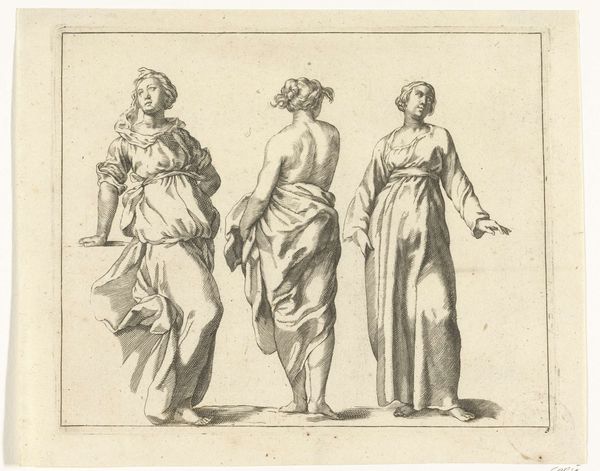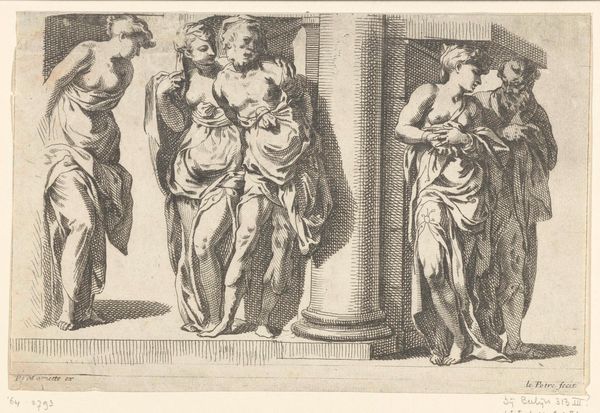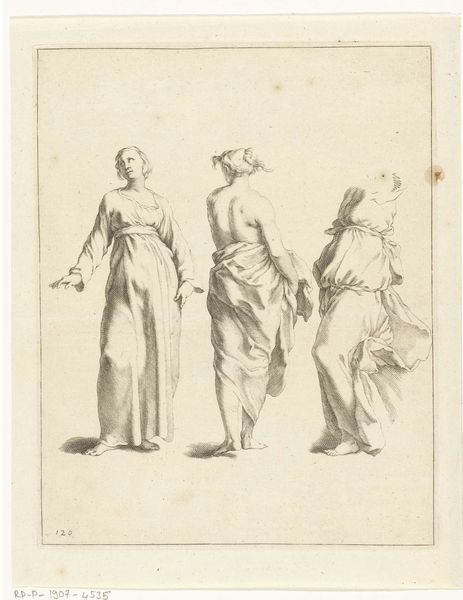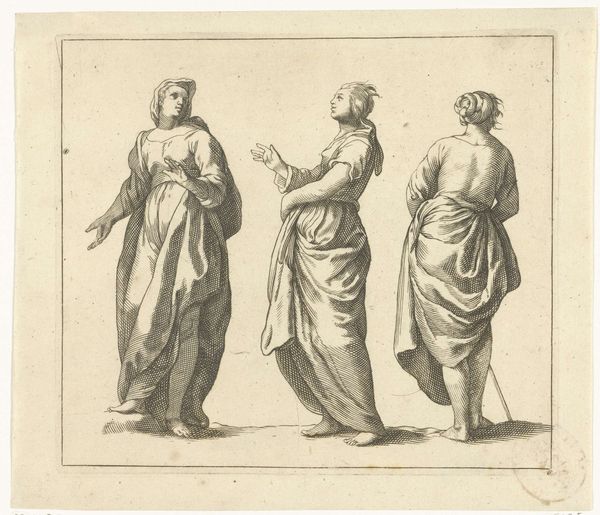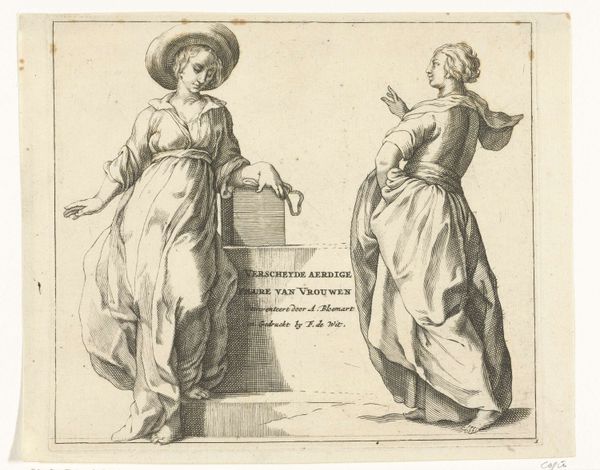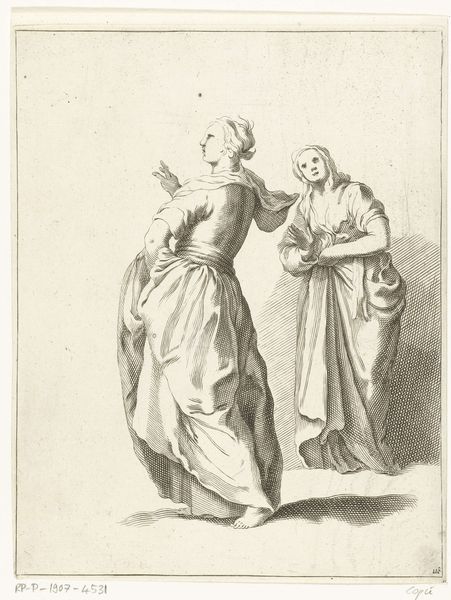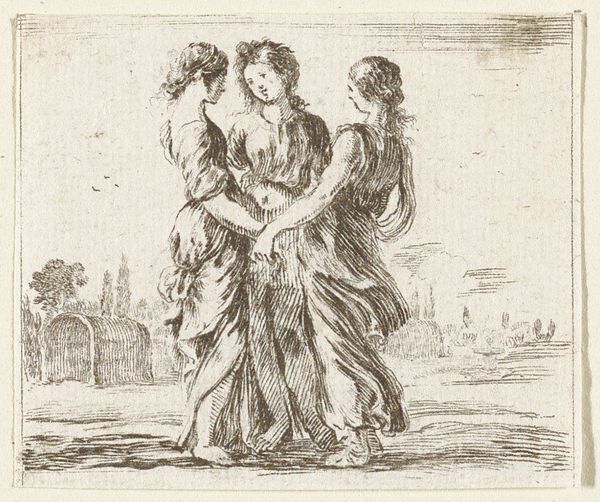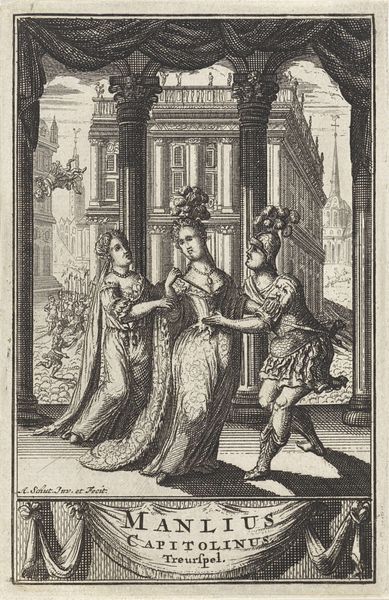
drawing, print, engraving
#
portrait
#
drawing
#
baroque
# print
#
caricature
#
figuration
#
portrait drawing
#
genre-painting
#
engraving
Dimensions: height 156 mm, width 191 mm
Copyright: Rijks Museum: Open Domain
Editor: This engraving from around 1700, called "Three Women," caught my eye. I'm struck by how the artist depicted these women, their postures and clothing, especially considering it’s a print. How do you see this work through a materialist lens? Curator: A materialist approach compels us to examine the conditions of its production and consumption. This isn't some grand history painting but a print, designed for wider distribution and, presumably, a middle-class audience. What can the material itself—the ink, paper, and the engraving process—tell us about the artist's intended audience? Editor: So, you are suggesting that its function as a printed image—multiple and relatively cheap to reproduce—was meant for common people and common themes. What does that tell us about these three women? Curator: Exactly! The very *choice* of printmaking signals a democratic impulse. Are these idealized beauties from mythology? No, they appear as working women, perhaps rendered with a touch of satire. Look closely: are they fashionable elites, or everyday figures? Their gestures suggest perhaps, movement or common labour. Their materiality makes it approachable, part of everyday consumption. This affects our experience significantly. Editor: It is really striking, and I never considered the "work" the engraving requires and makes accessible to the middle class, instead of inaccessible oil paintings. It sounds like, for a materialist, the materials and printing create the meaning. Curator: The production *and* consumption shape the meaning, not dictate it! I mean, look closer at the detail and line, a technique. I wouldn't say the artist is completely absolved of choices that could make these three "high art". A purely technical work or commission and its circulation contribute to, complicate and contradict our understanding of their cultural status. Editor: That's fascinating, thinking about how production changes the entire work, especially for its cultural status! Thanks so much! Curator: My pleasure! Remember, analyzing the 'stuff' of art is just one pathway. Hopefully it provides new perspective of everyday practices of the 17th century.
Comments
No comments
Be the first to comment and join the conversation on the ultimate creative platform.
